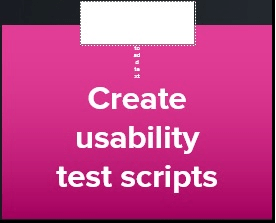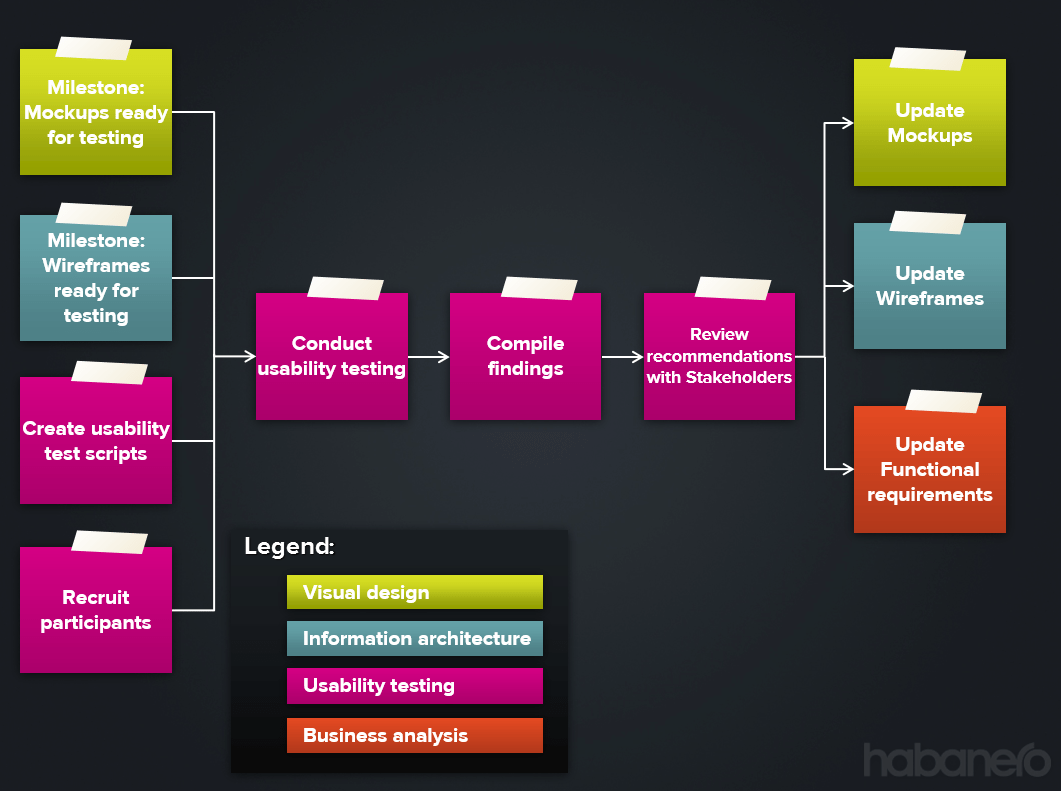As I was getting into creating the schedule for my first major project, I sat down to write up the MSProject schedule and I quickly realized how much I didn’t know. The extent of my knowledge looked a little like this:

It became clear to me that I needed to pull together the people on the team who were executing the work into a workshop to confirm how we were all going to do this project together. At this point in Habanero’s delivery evolution, each group had fairly defined internal processes, but there wasn’t much overlap between them.
That’s when I realized that I needed to think of myself as a facilitator, not someone with all the answers. I had to acknowledge that the subject matter experts are just that, experts. The value I could provide was to surface their knowledge and map how each area intertwines with each other so we would all be on the same page.
The approach outlined below has evolved a lot since my first major project, but the format and process is still valuable to anyone at the beginning of a large-scale project. Planning workshops add so much value during the project lifecycle, and that value is something that never changes from engagement to engagement.
Pre-think the planning workshop
Every project has deliverables, a scope, and a process. Pre-thinking the planning workshop might sound redundant, but it was important for me to get my thoughts straight before calling the group together.
As I thought about what each of these areas would require to complete, I realized that the planning workshop is necessary to pull together the third item, the process.
As I pre-planned the workshop, the three project components look something like this:
- Deliverables – what documents need to be produced; who is accountable for what?
- Solution – what is the tangible product that will be created?
- Process – how are we doing this, who is going to be involved, who is going to approve the completion?
Prepare for the planning workshop
In preparation for the workshop, it is ideal to:
- List the deliverables outlining known ownerships.
- List all of the unknowns and ask team members for their input.
- Get an understanding of all the team members’ strengths and the role they’ll play on the project.
- Find a nice open space with walls to hang static cling white boards.
- Plan for food to be brought in and available all day!
I’m sure this list looks obvious, but it’s so important to write down the details before the group gets together. If anything, it keeps you focused as you facilitate all the different points of view that come together during a planning workshop. It’s easy to get bogged down in details and speculations, so having a clear plan is necessary to stay on track.
Oh, and it’s been my experience that two to three days is ideal for a planning session. One day just starts to pull the approach together, but doesn’t allow for a cycle of reflection and to then come back together to refine and polish the approach. The only regret I’ve had is when we haven’t been able to have more than one day together!
Lead the planning workshop
Okay, so now that the workshop lead has planned the workshop, it comes down to leading the session. That’s why it’s crucial to have a defined approach.

Using the preparation materials collected ahead of time, work through the unknowns as a check list to ensure all the conversation points are addressed. Each logical work stream is represented by a different post-it note color. On each post-it note is written an actionable activity in the verb-noun format.
Then, the facilitator should get the team to map out on the wall when the work will be done and draw the dependencies between each activities. Where possible, rough time specs are put against each task. It is important to ensure by the end of the session, all questions have been answered, all deliverables are on the wall showing the approach to completing, reviewing and approving, and the approach to completing the tangible product has been flushed out as well. The project manager uses this map to create the project schedule that will be later reviewed with the team, with major milestones summarized in the kick off meeting.
Everyone should participate in the workshop, and it’s the facilitator’s job to ensure every lead, deliverable owner, and stakeholder is able to provide insight into both the project phases and the organizational context surrounding the project. The approach we use now almost always incorporates our clients for this reason.
Again, this sounds obvious, but bringing everyone together is one of the most important reasons behind the planning workshop, because projects need cohesive teams to succeed.

This is a sample snapshot outcome of the larger project planning process.
The point of planning workshops
There is something uniquely powerful about having the right people in one room at the same time and seeing everyone nodding in unison in agreement about:
- what we are doing
- how we are doing it
- who is doing what, when and for how long
- who needs what from whom to do what they need to do
- who is going to say we are done
- and most importantly, why we are doing this to begin with
Remember, we don’t create and execute a project schedule in a vacuum. We do these projects with our clients, so it is equally important to build the plan with them too. Planning workshops are just one of the ways to engage everyone on a project team.



.jpeg?bc=white&la=en&mw=416&modified=20251202191043&hash=E64AA9DFFAE8D1AC27890831F714D5B0FA2FEBB2)

